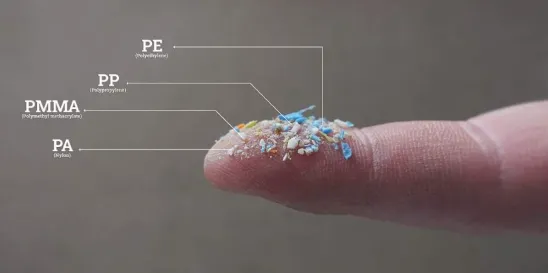On Thursday, 14 December 2023, the US Environmental Protection Agency (EPA) released its Second Annual Progress Report under the 2021 PFAS Strategic Roadmap outlining notable regulatory actions taken on per- and polyfluoroalkyl substances (PFAS). 2023 was an active year, including for regulating chemical manufacturing and use under the Toxic Substances Control Act (TSCA), and additional actions are expected in 2024.
BACKGROUND
PFAS are a group of manufactured fluorinated chemicals found in many consumer products and industrial processes. Though there are thousands of different PFAS, few have been well studied. Often referred to as “forever chemicals,” PFAS are slow to break down and are known to accumulate in people, animals, and the environment over time. Under the Biden administration, the EPA is prioritizing the research and regulation of PFAS in the environment through its PFAS Strategic Roadmap.
REGULATIONS UNDER TSCA
TSCA PFAS Framework
As discussed in our recent alert, on Thursday, 29 June 2023, the EPA released a framework (Framework) for conducting risk assessments of new PFAS or new uses of PFAS under the TSCA New Chemicals Program. The Framework generally follows the traditional TSCA review processes for new chemicals, with additional PFAS-specific guidance for evaluating significant new use notices and pre-manufacture notices. The Framework establishes enhanced pre-market screening procedures for certain PFAS that EPA classifies as persistent, bioaccumulative, and toxic (PBT) chemicals.
Revised TSCA PFAS Reporting Requirements
On Wednesday, 11 October 2023, the EPA published a final rule (Rule) confirming reporting and recordkeeping requirements for PFAS under TSCA Section 8(a)(7). The Rule requires covered entities to submit individual reports for each year from 2011 to the present in which they manufactured or imported PFAS for a commercial purpose. This includes coincidental manufacture of PFAS as byproducts or impurities, as well as manufacture for use in product research and development. Entities that only process, distribute, use, or dispose of PFAS received domestically do not need to report under the Rule, so long as they have not manufactured (or imported) PFAS for a commercial purpose. Reports must include chemical identities or trade names; categories or proposed categories of use; volumes made and processed; byproducts; environmental and health effects; extent of worker exposure or potential exposure; and manners or methods of disposals for each reportable substance.1
The Rule defines PFAS broadly and recognizes that the definition encompasses a large array of substances. Rather than publish a finite list of PFAS subject to the Rule, EPA chose to employ a structural definition, which is expected to encompass at least 1,462 different PFAS. EPA plans to publish this nonexhaustive list, which has grown by over a hundred PFAS since the Rule was proposed in 2021.
Covered entities must report all PFAS and related information that is “known or reasonably ascertainable” by them. EPA acknowledges that certain portions of reportable information—such as chemical identities not on the public inventory, company identifiers, or production volumes—may be withheld from the public as confidential business information (CBI). Entities must make CBI claims at the time of reporting, otherwise the information may be publicly released without notice.
The Rule vastly expands the number of manufacturers subject to TSCA reporting requirements, with very few exemptions. Notably, the Rule does not exclude manufacturers or importers of PFAS-containing articles2 from the reporting requirements, and it does not provide an exemption for most research and development activities. Further, the Rule does not include a de minimis reporting threshold; any amount of manufactured or imported PFAS during the relevant time period is reportable. EPA estimates overall compliance costs will likely exceed US $875 million. A wide range of entities may be responsible for submitting reports. For example, PFAS may be found in nonstick cookware, firefighting foams, clothing and fabric, piping, food packaging, sealants, and paints. Manufacturers and importers of these products could be subject to the revised reporting requirements, though the list is not exhaustive.
Most manufacturers must submit reports to EPA within 18 months, by Thursday, 8 May 2025. Small importers of PFAS-containing articles must satisfy reporting requirements within 24 months, by Monday, 10 November 2025. Entities should submit reports electronically through the EPA’s Central Data Exchange portal. EPA will provide a streamlined reporting form for certain importers of PFAS-containing articles who do not know or cannot reasonably ascertain the information required by the standard reporting requirements.
PFAS ON THE TOXICS RELEASE INVENTORY
The Toxics Release Inventory (TRI), established under Section 313 of the 1986 Emergency Planning and Community Right-to-Know Act (EPCRA), annually tracks the release of certain chemicals that may pose a threat to human health and the environment. Mining, manufacturing, hazardous waste management, and power generation facilities are examples of facilities typically responsible for TRI reporting. The National Defense Authorization Act for fiscal year 2020 added 172 PFAS to the list of chemicals covered by the TRI. The reporting limit for PFAS was initially set at 100 pounds and provided a de minimis exemption that “allow[ed] facilities to disregard concentrations of TRI listed chemicals below 1% (0.1% for carcinogens) in mixtures or other trade name products they import, process, or otherwise use in making threshold calculation and release and other waste management determinations.” The TRI has since expanded and now contains 189 PFAS.
Revised TRI PFAS Reporting Requirements
On Friday, 20 October 2023, EPA issued a final rule (TRI Rule) modifying TRI reporting requirements for PFAS. The TRI Rule designates all PFAS on the TRI as “chemicals of special concern” (CSC) as of reporting year 2024. Generally, CSCs are chemicals EPA classifies as PBTs, or in some instances, carcinogenic. By reclassifying PFAS as CSCs, EPA eliminated the de minimis reporting exemption for the listed PFAS chemicals. All concentrations of PFAS, no matter how small, are reportable when making TRI threshold determinations and release calculations. This is significant, since many PFAS exist in low concentrations in mixtures, and the prior de minimis exemption permitted facilities to discount those uses when determining their TRI reporting obligations.
The TRI Rule also eliminates simplified reporting options for PFAS. All PFAS TRI reports must now utilize TRI Form R, which requires a full accounting of releases and waste management pathways and individual reports for each chemical. The TRI Rule additionally eliminates range code reporting for PFAS. Facilities must report the precise amount of PFAS released per pathway on their Form R reports rather than utilizing estimated range codes.
Lastly, EPA’s TRI Rule significantly modifies EPCRA supplier notification requirements. Effective Thursday, 30 November 2023, impacted suppliers must disclose TRI-regulated PFAS and existing PBT CSCs at any and all concentrations in their products to downstream purchasers. Entities have 30 days to provide or correct Supplier Notifications once they become aware of a TRI-regulated chemical in a product previously sold to a TRI-regulated customer. Similar to the revised TSCA reporting requirements, the amended TRI reporting rules will likely generate significant compliance costs for a wide range of entities.
LOOKING AHEAD
Federal PFAS Actions
EPA plans to continue regulating PFAS in 2024 and beyond. In March 2023, EPA proposed national drinking water standards for six PFAS. For a detailed summary of the proposed rule, see our prior alert. This rulemaking is currently anticipated in 2024. Additionally, EPA intends to issue a final rule designating perfluorooctanoic acid (PFOA) and perfluorooctanesulfonic acid (PFOS) as hazardous substances under the Comprehensive Environmental Response, Compensation, and Liability Act early this year, currently anticipated in March 2024. For further information and analysis of this proposed rule, see our previous alert. EPA also anticipates starting the rulemaking process to codify PFAS testing methods under the Clean Water Act sometime in 2024.
State PFAS Actions
To date, about a dozen states have enacted or are actively considering PFAS legislation, and several states have mandated various PFAS product bans. While each state law is somewhat unique, these laws generally have two common elements: (1) broad bans of commonly used household products that contain PFAS, such as carpets, textiles, and cosmetics; and (2) notification requirements for products with intentionally added PFAS, accompanied by scheduled market phase-outs, unless the product is specifically excluded by regulation. Maine was one of the first states to enact PFAS legislation, and many other states have enacted or hope to enact “copycat” laws. These laws and their regulations, while seemingly simple, will have widely felt implications.
CONCLUSION
EPA’s 2023 PFAS regulations and associated requirements may require significant compliance costs and effort from covered entities. As such, industries impacted by these regulatory actions, including under TSCA, should familiarize themselves with all revised reporting requirements and be prepared to satisfy them prior to the deadlines noted above.
1 15 U.S.C. § 2607(a)(2).
2 An article is “a manufactured item (1) which is formed to a specific shape or design during manufacture, (2) which has end use function(s) dependent in whole or in part upon its shape or design during end use, and (3) which has either no change of chemical composition during its end use or only those changes of composition which have no commercial purpose separate from that of the article, and that result from a chemical reaction that occurs upon end use of other chemical substances, mixtures, or articles; except that fluids and particles are not considered articles regardless of shape or design.” 40 C.F.R. § 704.3 (2022).









 />i
/>i

